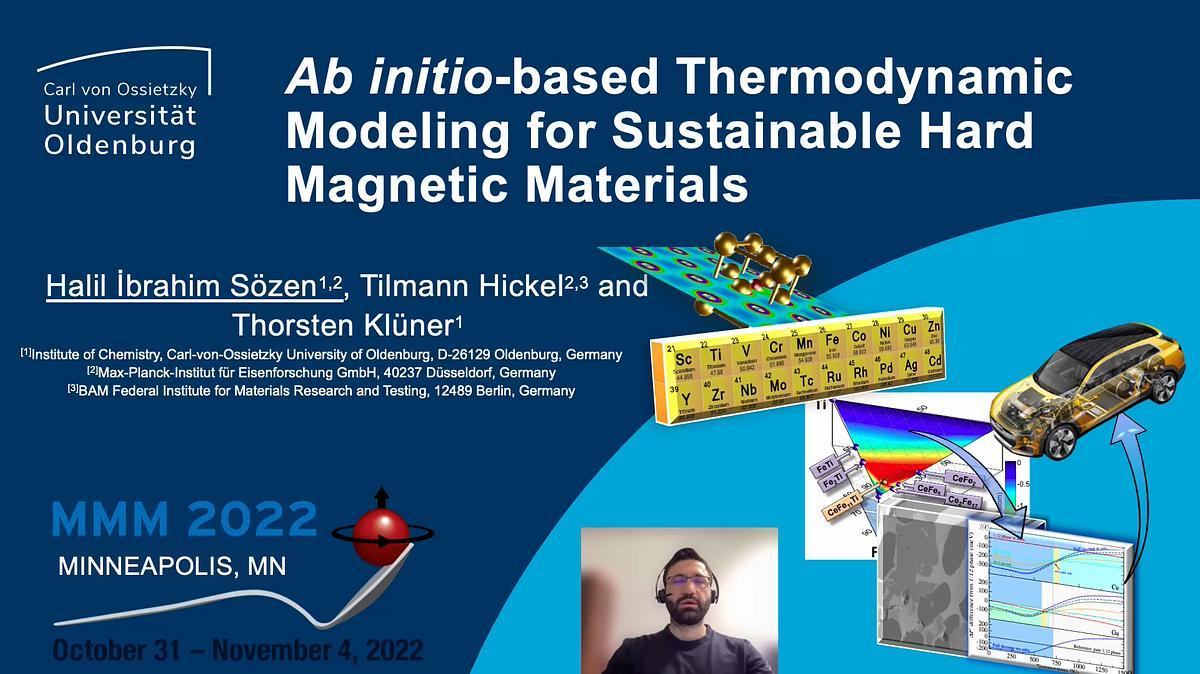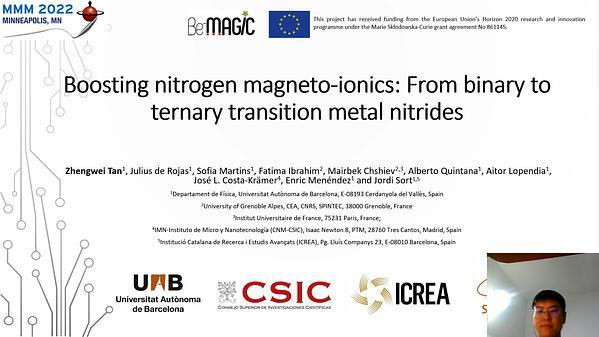
Premium content
Access to this content requires a subscription. You must be a premium user to view this content.

technical paper
Ab initio based Thermodynamic Modeling for Sustainable Hard Magnetic Materials
The resource criticality of rare-earth (RE) elements on the global market has triggered significant research into more resource-efficient alternative hard-magnetic materials1. The utilization of the RE-lean ThMn12 materials system in combination with the abundant RE element Ce is a promising strategy. One of the main challenges for the Ce-based hard-magnetic materials is the formation of detrimental Laves phases next to the ThMn12-type compound CeFe11Ti2. In this contribution, we present an ab initio-based approach to modify the stability of these phases in the Ce-Fe-Ti system by additions of 3d and 4d-elements. We start with Cu and Ga substitutions and employ state-of-the-art approaches for vibrational, electronic, and magnetic entropy contributions3,4 to calculate the Helmholtz free energy F(T,V) for all relevant phases. The results are used to provide two fundamental methodological insights. One of them is our new modeling concept of partial decomposition, which considers the enrichment of the added solutes in phases that would at the considered temperature not be stable in a full decomposition. In the case of Cu, this effect suppresses the formation of CeFe11Ti, whereas in the case of Ga this ensures the presence of a small phase fraction of CeFe11Ti. The second conclusion is the dominant impact of 0 K formation enthalpies on the solute-enhances phase stability compared to finite temperature entropy terms. Based on this a screening approach, considering the substitution of all 3d and 4d-elements, is developed. We show that substituted elements with more than a half-filled 3d-shell or with less than a half-filled 4d-shell mainly reduce the formation temperature of the 1:12 phase. According to these thermodynamic considerations, especially Zn and Tc turn out to be promising substitution candidates. Therefore, more detailed finite temperature ab initio evaluations of the free energies have been performed for these elements. The difference between the screening determination of the critical temperature and a fully temperature-dependent determination of free energies is within the error bar of the other approximations. This demonstrates the robustness and efficiency of our developed screening approach.
References:
1 O. Gutfleisch, et al.: Magnetic materials and devices for the 21st century: Stronger, lighter, and more energy efficient. Advanced Materials, 23, (2011) 821.
2 H. I. Sözen, et al.: Ab initio phase stabilities of Ce-based hard magnetic materials and comparison with experimental phase diagrams. Physical Review Materials, 3 (2019) 084407.
3 H. I. Sözen, et al.: Impact of magnetism on the phase stability modeling for rare-earth based hard magnetic materials. CALPHAD: Computer Coupling of Phase Diagrams and Thermochemistry, 68 (2020) 101731.
4 H. I. Sözen, et al.: Ab initio phase stabilities of rare-earth lean Nd-based hard magnets. Journal of Magnetism and Magnetic Materials, 559 (2022) 169529.

Figure 1

